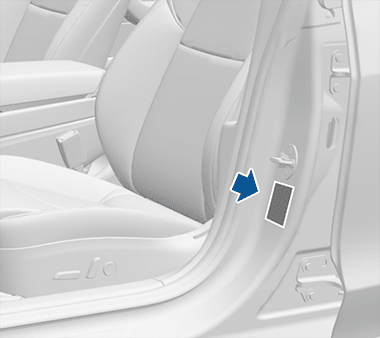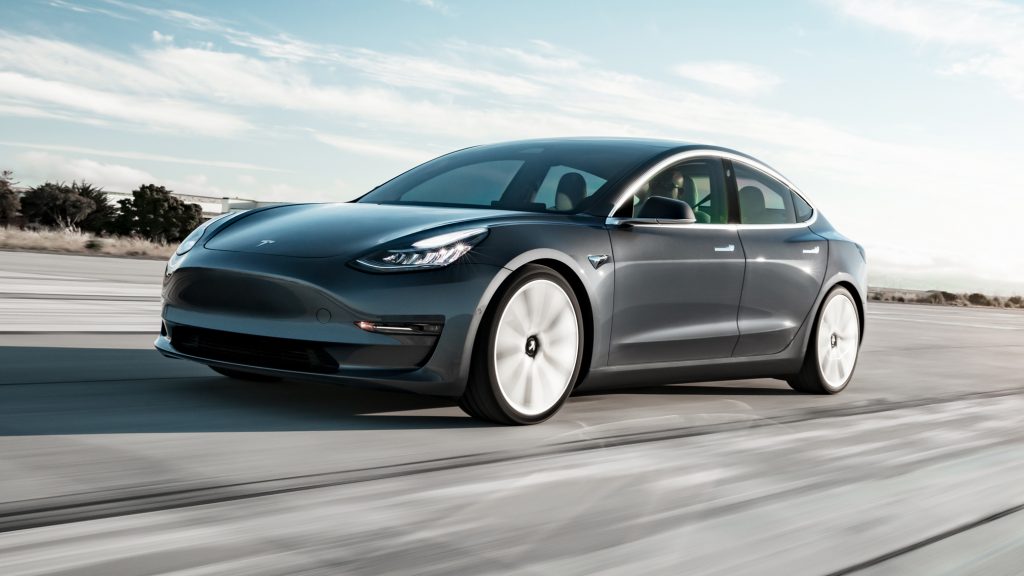Whether you’re a new or seasoned Tesla Model 3 owner, it’s vital that you educate yourself about your correct tire pressure. Why? Well, maintaining four pieces of rubber can be the difference between you reaching your destination safely or not at all.
Let’s be honest; Tesla’s aren’t your average car. Owning one of these vehicles is a dream come true for many automobile enthusiasts, which is why we know how important it is for you as an owner to arm yourself with the knowledge needed to look after your precious vehicle.
Though it’s not just about safeguarding your vehicle. Inflating your tires correctly could also save your life. That’s because tires that aren’t inflated properly are susceptible to blowouts.
In a study of 60,397 vehicles involved in crashes, 6.7% of the accidents involved tire blowouts.
It’s easy to see why tire maintenance on your Tesla Model 3 is so important. Yet, despite that fact, tires are still often neglected. We’re here to put a stop to that; this article answers all your questions about your Tesla Model 3’s tire pressure.
Table of Contents
Why Is Tire Pressure So Important?
Tire pressure is an essential but often overlooked part of regular vehicle maintenance; the tire pressure on your Tesla Model 3 can make or break your driving experience.
The pressure of your tires can determine these four crucial elements:
- Safety
- Fuel Efficiency
- Comfort
- Durability
1. Safety
Your safety comes first. Tires with a too high or too low pressure are at risk of damage. In the U.S. alone, 11000 traffic accidents occur because of tire failure. These are often caused by poor tire maintenance.
2. Fuel Efficiency
Electric vehicles are 3 times more efficient than internal combustion engine (ICE) cars, and keeping your tires at the correct pressure provides you with even better fuel economy.
The correct tire pressure on your Tesla Model 3 is even more important than you think. Incorrect tire pressure on an ICE car may only change fuel economy by 3%, but the same mistake in your Tesla Model 3 could result in a range reduction of 9%.
3. Comfort
Tires that are too hard or too soft won’t provide a comfortable ride.
It’s not only a matter of comfort, though; your Teslas suspension is designed with particular tire pressure in mind. Deviating from this pressure can cause excessive wear to these components long-term.
4. Durability
Tires inflated with the correct pressure last the longest. You wouldn’t want to replace your tires more than necessary or suffer from a blowout on the road.
Generally speaking, over-inflation is less of a problem than under-inflation. More often than not, under-inflation leads to punctures, excessive wear, and poor fuel economy or range.
Yet, over-inflation can lead to other problems, such as increased stopping distance. This is a serious safety hazard.
Most passenger cars need 32 to 35 PSI, but what about your Tesla Model 3?
What Is The Correct Tire Pressure For A Tesla Model 3?
Your Tesla Model 3 comes fitted with 18″ Aero wheels. According to your Parts & Accessories guide in the Tesla Model 3 Owner’s Manual, all your tires need 42 PSI (290 kPA).
This information is displayed on the statutory plate located on the door pillar, along with your Tesla’s VIN number.

You may have to adjust your tire pressure for speeds equal to or exceeding 138 mph (220 kph). Tesla recommends increasing the pressure of both front and rear tires to 44 PSI (300 kPA) for these speeds.
All wheel sizes for your Tesla Model 3 need the same 42 PSI (290 kPA) tire pressure. See the tables below for recommended tire pressures of Tesla Model 3 wheels sizes and brands.
All Tesla 20″ Wheels
| Tire (front/rear) | Size | Tire Pressure |
|---|---|---|
| 20″ Michelin, Pilot Sport 4S (PS4S) | 235/35ZR20 | 42 PSI (290 kPa) |
| 20″ Michelin PS Cup 2 | 245/35ZR20 | 42 PSI (290 kPa) |
All Tesla 19″ Wheels
| Tire (front/rear) | Size | Tire Pressure |
|---|---|---|
| 19″ Continental, ProContact RX | 235/40R19 | 42 PSI (290 kPa) |
| 19″ Hankook Ventus S1 Evo3 | 235/40R19 | 42 PSI (290 kPa) |
| 19″ Pirelli Winter Sottozero 3 | 235/40R19 | 42 PSI (290 kPa) |
All Tesla 18″ Wheels
| Tire (front/rear) | Size | Tire Pressure |
|---|---|---|
| Michelin, Primacy MXM4 | 235/45R18 | 42 PSI (290 kPa) |
| Michelin, Pilot Sport 4 (PS4) | 235/45R18 | 42 PSI (290 kPa) |
| Pirelli Winter Sottozero Serie II | 235/45R18 | 42 PSI (290 kPa) |
All tires listed above need 44 PSI (300 kPA) for speeds equal to or greater than 138 mph (220 kph).
When and How Do You Check The Tire Pressure On A Tesla Model 3?
Checking the tire pressure on your Tesla Model 3 is easy. You can access the owner’s manual through your Tesla Model 3 touchscreen. The Tire Care & Maintenance Guide in the owner’s manual contains all relevant tire information.
When?
It’s always better to check your vehicle’s tire pressure when it’s stationary because friction from the road surface makes the air inside warm up when your car has been in motion. Once the air expands, it’s difficult to get an accurate pressure reading. This is the difference between “cold” and “warm” tires.
But, the Tesla Model 3 is a bit different in two ways.
- Using the touch screen, you can check tire pressure from your Tesla driver’s seat.
- Your Tesla Model 3 must be in motion for a short while before measurement can take place.
How?
To check your tire pressure, press control and navigate to service. Your tire pressure will then appear on your Model 3’s touchscreen.
According to user reports, voice commands can’t display tire pressure anymore. Model 3 owners have to navigate manually to Control > Service.
You may swipe left under the visualization of your vehicle to display tire pressure; this also displays the pressure.
Your Tesla Model 3 has a Tire Pressure Monitoring System (TPMS). The system only activates once you’ve driven your Tesla Model 3 over 15 mph (25kph). That’s why you need to start your car and drive it for a short while before you can measure your tire pressure.
Tesla recommends driving no more than one mile (1.6km) before checking tire pressure.
Parking in hot weather or direct sunlight can affect pressure readings as it’ll cause the air in your tires to expand.

Source: not a tesla app
The TPMS on your Tesla Model 3 will alert you should your tires be over or under-inflated. Should this be the case, the Tire Pressure Indicator Light will flash for one minute when you power on your car. This will also come up as an alert on your touchscreen.
But what if your Tesla Model 3 does not display tire pressure after taking these steps. Then it’s best to contact Tesla Customer Support here.
What Will Happen If You Drive A Model 3 With The Wrong Tire Pressure?
Driving any vehicle with the wrong tire pressure is not a good idea. The same is true for your Tesla Model 3.
Deviating a couple of PSI from the recommended pressure is no problem. If you deviate more than 20% from the recommended 42 PSI (290 kPA), your TPMS will notify you via an alert. This alert will appear on your touchscreen.
Both over and under-inflated tires have serious disadvantages.
Disadvantages Of Over-Inflated Tires
- Lower comfort ride
- Decreased traction
- Decreased handling
- Increased stopping distances
- Increased wear on suspension
- Faster center tire tread wear
- Higher risk of puncture
Disadvantages Of Under-Inflated Tires
- Poorer fuel economy
- Increase tire wear
- Increased traction
- Decreased handling
- Higher risk of puncture
- Increased wear on suspension
3 Warning Signs That Your Tire Pressure Is Wrong
The three warning signs that your tire pressure is wrong are:
- An alert from the Tire Pressure Monitoring System (TPMS)
- Your Tesla Model 3’s handling
- Visual clues
The great news about your Tesla Model 3 is that it’ll warn you if your tire pressure is wrong. The TPMS sends an alert to your touchscreen should your tire pressure deviate by 20% or more. An alert from your TPMS is your first warning sign.
Your Tesla Model 3’s handling should be your second port of call for warning signs. Pay attention to:
- Flapping noises from tires while driving
- Poor fuel economy
- Soft steering
- Wheel spinning
- Decreased stopping distance
Visual clues are the third layer of warning signs that indicate your tire pressure may be wrong. You should be able to see this when you look at your tires. These include things like:
- Saggy looking tires
- Hard looking tires
- Heavy wear on the tire wall
- Heavy wear on the center tread
If you notice sagginess in your tires, they may be under-inflated. Over-inflation is more difficult to detect visually. Other indicators, like poor fuel economy and a bumpy ride, will give it away.
Checking the tread of your tires may give you clues to their health. A worn center tread may show over-inflation; a worn tire wall shows under-inflation.
Final Thoughts
In conclusion, your Tesla model 3 tire pressure should sit at 42 PSI (290 kPA). If you want to drive at speeds equal to or greater than 138 mph (220 kph), you should pressurize them to 44 PSI (300 kPA).


